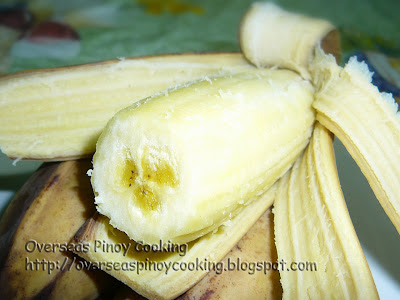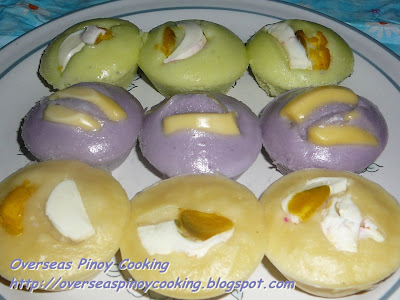The Art of Kinilaw
"The kinilaw moment is that instant when the raw fish (or other seafood, or meat) meets the vinegar or other souring agent, and transformation begins from the raw state.
In cooking vegetables, there is a spectrum of textural change: from the hardness of the raw, to the limpness of the overcooked. The perfect moment is somewhere along the line, at the point when the vegetable, e.g. ampalaya (bitter melon) retains the crispness of the raw, but acquires the softness of the cooked without being either hard or limp.
With kinilaw, the perfect moment is marked visually by a change from translucence towards, but without reaching, opacity. Texturally, it is a moment when the fish or shrimp retains the firm softness of the raw, but reaches a new state of being that has been called niluto sa asim - "cooked", or more accurately transformed, in sourness. It is not an opaque solidity, with the fibres white and the flesh texture that of poached fish. Along the spectrum, it is nearer the raw than the cooked, the flesh just a breath away from the natural state, mediated only by the vinegar-acid."
Above is the introduction lifted from chapter; The Art of Kinilaw of the book I am now reading.
Kinilaw: A Philippine Cuisine Of Freshness
by Edilberto N. Alegre & Doreen G. Fernandez.
Makati, Metro Manila: Bookmark, cl991
This is a very good book, indeed. The book is also educational it is about the origins and history of kinilaw in the Philippines. It also portray the various kinilaw of every regions from south to north of the archipelago.
I have no intention of plagiarizing the book, I just lifted some parts of the book to give everyone a clear picture on how good this book is. I am more than happy to give the authors and publisher full credit. Thank you.
A related documentary video about kinilaw, Ibat-Ibang Klase Ng Kinilaw Na Ulam by Jesica Soho, Kapuso Mo of GMA is also available.
Watch the full documentary video.
See all related post on kinilaw click here.
In cooking vegetables, there is a spectrum of textural change: from the hardness of the raw, to the limpness of the overcooked. The perfect moment is somewhere along the line, at the point when the vegetable, e.g. ampalaya (bitter melon) retains the crispness of the raw, but acquires the softness of the cooked without being either hard or limp.
With kinilaw, the perfect moment is marked visually by a change from translucence towards, but without reaching, opacity. Texturally, it is a moment when the fish or shrimp retains the firm softness of the raw, but reaches a new state of being that has been called niluto sa asim - "cooked", or more accurately transformed, in sourness. It is not an opaque solidity, with the fibres white and the flesh texture that of poached fish. Along the spectrum, it is nearer the raw than the cooked, the flesh just a breath away from the natural state, mediated only by the vinegar-acid."
Above is the introduction lifted from chapter; The Art of Kinilaw of the book I am now reading.
Kinilaw: A Philippine Cuisine Of Freshness
by Edilberto N. Alegre & Doreen G. Fernandez.
Makati, Metro Manila: Bookmark, cl991
This is a very good book, indeed. The book is also educational it is about the origins and history of kinilaw in the Philippines. It also portray the various kinilaw of every regions from south to north of the archipelago.
I have no intention of plagiarizing the book, I just lifted some parts of the book to give everyone a clear picture on how good this book is. I am more than happy to give the authors and publisher full credit. Thank you.
A related documentary video about kinilaw, Ibat-Ibang Klase Ng Kinilaw Na Ulam by Jesica Soho, Kapuso Mo of GMA is also available.
Watch the full documentary video.
See all related post on kinilaw click here.





Thanks for the tip on the Kinilaw book. I'll have to get a copy :)
ReplyDeleteI have been enjoying reading your old recipes and have bookmarked a few to try out. Hindi nga lang ako makapag comment all the time. Just wanted you to know your efforts are appreciated.
hi jmon, not to worry, thanks for the visit and encouraging comment.
ReplyDelete